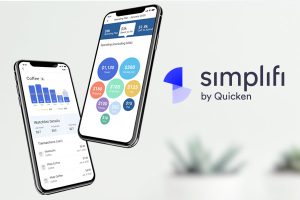Understanding Apple Pay, Google Wallet and Similar Apps
Date: December 13, 2016
A growing number of businesses now let you make purchases just by tapping or waving your smartphone near the credit card reader. It’s a new way to make payments from your credit card or debit card without having to sign your name or even having to take out your wallet. If you haven’t used this technology yet, this is how the two most common ways of paying with Apple and Android devices works.
Apple Pay
Apple Pay is an app that’s available on most recently released iPhones and iPads, such as the iPhone 6, iPad Pro and iPad Air 2. When you log in to the app, you add your credit card or debit card to it, and the app uses your fingerprint to confirm your identity.
Use the app to buy things wherever Apple Pay is supported, including most apps on your device and store credit card terminals that support Apple Pay. If you’re using an app, just tap the Apple Pay button. At a credit card terminal, wave your device near the terminal. Then confirm your identity by touching the fingerprint sensor on the device’s Home button, and the money is automatically billed to your credit or debit card.
Google Wallet
Google Wallet is just like having a debit card that’s connected to your Google or Gmail account. In fact, Google will even send you a Google Wallet card when you set up your wallet account. You can transfer money between your Google Wallet and your bank account or credit card and make purchases online wherever Google Wallet is supported. In stores and at bank ATMs, you can use your Google Wallet card just as you would any other debit card.
Android Pay
Android Pay is an app similar to Apple Pay that is available on recently released Android and Apple smartphones and tablets. Much like with Apple Pay, you can make in-store purchases where you see the Android Pay logo at the checkout. You simply need to unlock your phone and wave it over the interface; there’s no PIN, fingerprint or anything else required. The Android Pay app is available on most Android devices released since 2015 that run Android KitKat 4.4 or later.
A Peek Behind the Technology
The reason you’re able to use a smartphone or tablet to make purchases today is due to a technology called Near Field Communication (NFC). It’s a small piece of hardware built into most Apple and Android touch devices released since 2015 that communicates with modern credit card machines using radio waves. The signals are encrypted so only your phone and the credit card machine can understand them, keeping your transactions safe and secure.
This technology isn’t limited to just Apple and Google. For example, if you have a new Samsung smartphone, you can use it to make purchases using Samsung Pay. It works much the same as Apple Pay or Android Pay, but includes an additional feature: It emits a magnetic signal in addition to the NFC radio signals, so it also works on old swipe-style credit card machines.
Quicken has made the material on this blog available for informational purposes only. Use of this website constitutes agreement to our Terms of Use and Privacy Policy. Quicken does not offer advisory or brokerage services, does not recommend the purchase or sale of any particular securities or other investments, and does not offer tax advice. For any such advice, please consult a professional.


